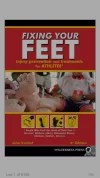I have read hundreds of questions and comments regarding very important subjects in this Forum and I am surprised to see that there is no concerns of " how to take care of your feet " during the Camino. In my experience, I have done the Camino four times, the special knowledge of how to take care of our feet is one of the most important subjects of the Camino....and foot problem is one of the most frequent problem preventing a pilgrim to reach Santiago.
It would be interesting to have the advices from the veterans in preventing foot blisters and any other preventable problem
that may interrupt the 800 plus Kms to Santiago!
Does anyone would like to comment on this?
It would be interesting to have the advices from the veterans in preventing foot blisters and any other preventable problem
that may interrupt the 800 plus Kms to Santiago!
Does anyone would like to comment on this?



















